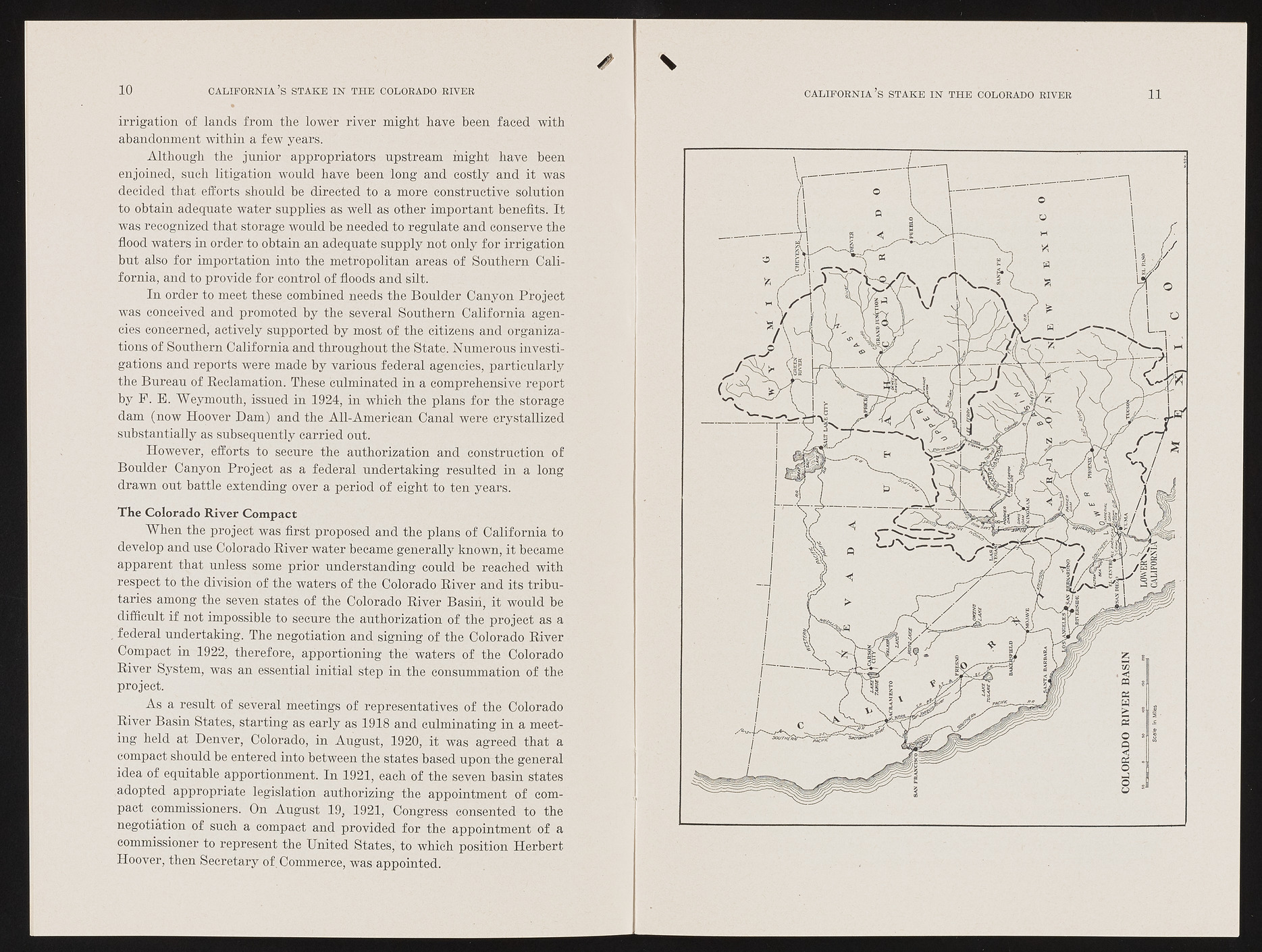Copyright & Fair-use Agreement
UNLV Special Collections provides copies of materials to facilitate private study, scholarship, or research. Material not in the public domain may be used according to fair use of copyrighted materials as defined by copyright law. Please cite us.
Please note that UNLV may not own the copyright to these materials and cannot provide permission to publish or distribute materials when UNLV is not the copyright holder. The user is solely responsible for determining the copyright status of materials and obtaining permission to use material from the copyright holder and for determining whether any permissions relating to any other rights are necessary for the intended use, and for obtaining all required permissions beyond that allowed by fair use.
Read more about our reproduction and use policy.
I agree.Information
Digital ID
Permalink
Details
Member of
More Info
Rights
Digital Provenance
Publisher
Transcription
10 CALIFORNIA’S STAKE IN THE COLORADO RIVER irrigation of lands from thodoAver river might have been faced with abandonment within a few years. Although the junior appropriators upstream might have been enjoined, such litigation would have been long and costly and it was decided that efforts should be directed to a more constructive solution to obtain adequate water supplies as well as other important benefits. It was recognized that storage would be needed to regulate and conserve the flood waters in order to obtain an adequate supply not only for irrigation but also for importation into the metropolitan areas of Southern California, and to provide for control of floods and silt. In order to meet these combined needs the Boulder Canyon Project was conceived and promoted by the several Southern California agencies concerned, actively supported by most of the citizens and organizations of Southern California and throughout the State. Numerous investigations and reports were made by various federal agencies, particularly the Bureau of Reclamation. These culminated in a comprehensive report by F. B. Weymouth, issued in 1924, in which the plans for the storage dam (now Hoover Dam) and the All-American Canal were crystallized substantially as subsequently carried out. However, efforts to secure the authorization and construction of Boulder Canyon Project as a federal undertaking resulted in a long drawn out battle extending over a period of eight to ten years. The Colorado River Compact When the project was first proposed and the plans of California to develop and use Colorado River water became generally known, it became apparent that unless some prior understanding could be reached with respect to the division of the waters of the Colorado River and its tributaries among the seven states of the Colorado River Basiii, it would be difficult if not impossible to secure the authorization of the project as a federal undertaking. The negotiation and signing of the Colorado River Compact in 1922, therefore, apportioning the waters of the Colorado River System, was an essential initial step in the consummation of the project. As a result of several meetings of representatives of the Colorado River Basin States, starting as early as 1918 and culminating in a meeting held at Denver, Colorado, in August, 1920, it was agreed that a compact should be entered into between the states based upon the general idea of equitable apportionment. In 1921, each of the seven basin states adopted appropriate legislation authorizing the appointment of compact commissioners. On August 19, 1921, Congress consented to the negotiation of such a compact and provided for the appointment of a commissioner to represent the Unitejl States, to which position Herbert Hoover, then Secretary of Commerce, was appointed. Ca l i f o r n i a ’s s t a k e i n t h e Co l o r a d o r iv e r 11

